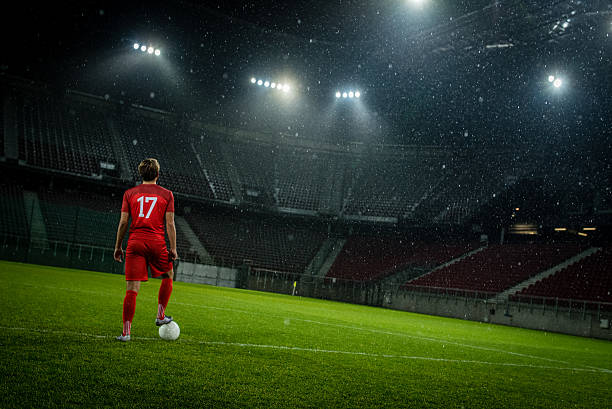Sports are a vital part of our lives, bringing people together and fostering a sense of community. Stadiums and arenas are the backbone of these events, and one of the most critical components of these facilities are the stadium lights. In this article, we’ll explore the history of stadium lighting, the different types of lights used today, and how modern technology is changing the way we illuminate our sports fields. Today, sports facilities have several different types of lighting options to choose from, each with its unique advantages and disadvantages.
Types of Stadium Lights
Stadium lights play a crucial role in sports, providing adequate illumination for players and spectators to enjoy the game. With advancements in lighting technology, there are now several types of stadium lights available for sports facilities. The type of stadium lights used in sports facilities can significantly impact the quality of the game and the overall experience of those attending.
LED Lights
LED (light-emitting diode) lights are the newest type of stadium lights and have quickly become the preferred choice for many sports facilities. LED lights produce light by passing an electric current through a semiconductor, which emits light. LED lights are more energy-efficient than HID lights, producing more light for less energy. They also have a longer lifespan, reducing maintenance costs.
Unlike traditional lighting fixtures, LED lights provide brighter and more uniform illumination while consuming less energy. They also have a longer lifespan, which translates to reduced maintenance costs in the long run. LED lighting is also known to provide better color rendering, which enhances the visual experience for fans watching the game both in-person and on television.
Another major advantage of LED stadium lighting is the ability to control the lights individually. This allows for more flexibility in lighting levels and configurations, enabling stadium operators to customize the lighting according to the requirements of the event. For example, during a football game, the lighting can be adjusted to highlight the playing field while dimming the lights in the stands. Similarly, during a concert or other entertainment event, the lighting can be set to create a more immersive experience for the audience.
While LED lighting has been the go-to option for new stadium constructions, there are also retrofitting options available for existing stadiums. This makes it possible for older stadiums to upgrade their lighting systems to LED technology without having to undergo a complete overhaul. This not only reduces the energy consumption and operating costs but also allows for improved lighting quality and overall game experience.
Incandescent Lights
Incandescent lights were the first type of stadium lights used, but they are no longer widely used due to their inefficiency. These bulbs produce light by heating a filament until it glows. Incandescent lights require a lot of energy to produce light and have a relatively short lifespan. They are also not very bright, making them a poor choice for lighting large sports fields.
HID Lights
High-intensity discharge (HID) lights were introduced in the 1980s and quickly became the go-to choice for stadium lighting. HID lights produce light by passing an electric current through a gas or vapor, causing it to glow. HID lights are much more efficient than incandescent bulbs, producing more light for less energy. They also have a longer lifespan, reducing maintenance costs.
There are two main types of HID lights used in stadiums: metal halide and high-pressure sodium. Metal halide lights produce a bright, natural-looking light, making them ideal for sports fields. High-pressure sodium lights produce a yellowish-orange light, which can distort colors and make it difficult to see the game.
Solar-Powered Lights
Solar-powered lights are a relatively new type of stadium light, providing an environmentally-friendly option for sports facilities. They use solar panels to capture energy from the sun, which powers the lights.
One of the significant advantages of solar-powered lights is their ability to provide energy-efficient lighting without relying on the electrical grid. They are ideal for outdoor sports facilities that receive plenty of sunlight and can significantly reduce the carbon footprint of sports facilities.
Induction Lights
Induction lights are another type of stadium light that produces a bright, natural-looking light. They use a magnetic field to generate an electric current, which produces the light. They are highly energy-efficient and have a longer lifespan than metal halide lights.
One of the significant advantages of induction lights is their ability to produce a bright, uniform light that is ideal for sports facilities. They also have a longer lifespan than other types of stadium lights, reducing the need for regular maintenance.
Impact on Sports
The type of lighting used in sports facilities can significantly impact the quality of the game and the overall experience of those attending. Proper lighting can help players see the ball and each other more clearly, reducing the risk of injury. It can also enhance the atmosphere of the event, making it more enjoyable for fans.
LED lights have had a significant impact on sports lighting, providing a more natural-looking light that allows players and fans to see the game more clearly. They also offer the ability to adjust the lighting to create unique effects and enhance the atmosphere of sporting events.
In addition to improving the quality of the game and the fan experience, stadium lights also play a significant role in sustainability. LED lights and solar-powered lights are more energy-efficient and environmentally-friendly than traditional stadium lights, reducing the carbon footprint of sports facilities.
Conclusion
Stadium lights have come a long way since the days of incandescent bulbs, and the future looks bright for sports lighting. LED lights have become the preferred choice for many sports facilities, providing a more natural-looking light and greater energy efficiency. Solar-powered lights offer an environmentally-friendly option, and induction lights provide a bright, natural-looking light with a longer lifespan.
The type of lighting used in sports facilities can significantly impact the quality of the game and the overall experience of those attending. As sports facilities continue to innovate and improve, it is likely that stadium lighting will continue to play a significant role in the future of sports.

